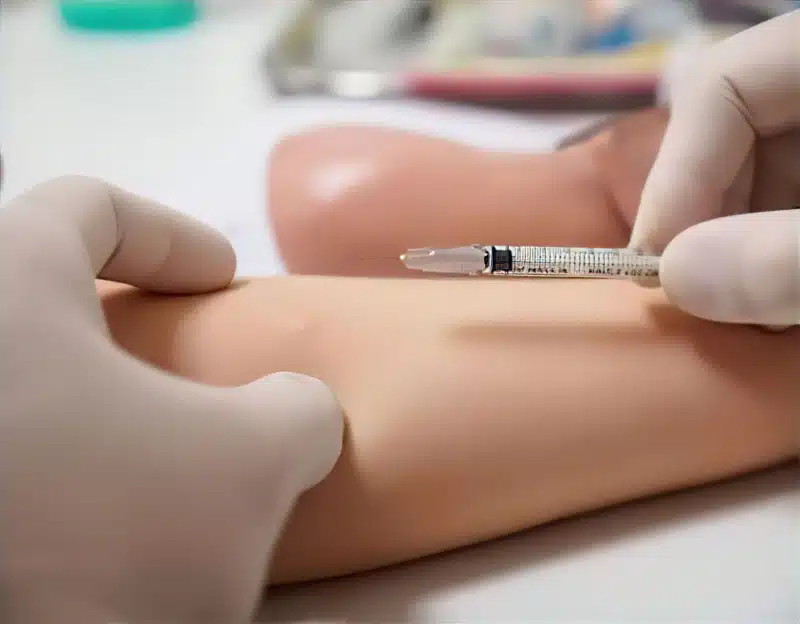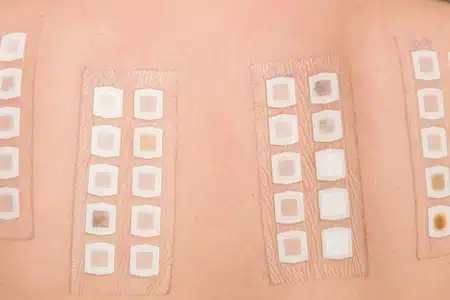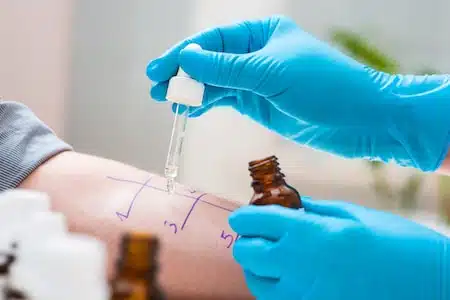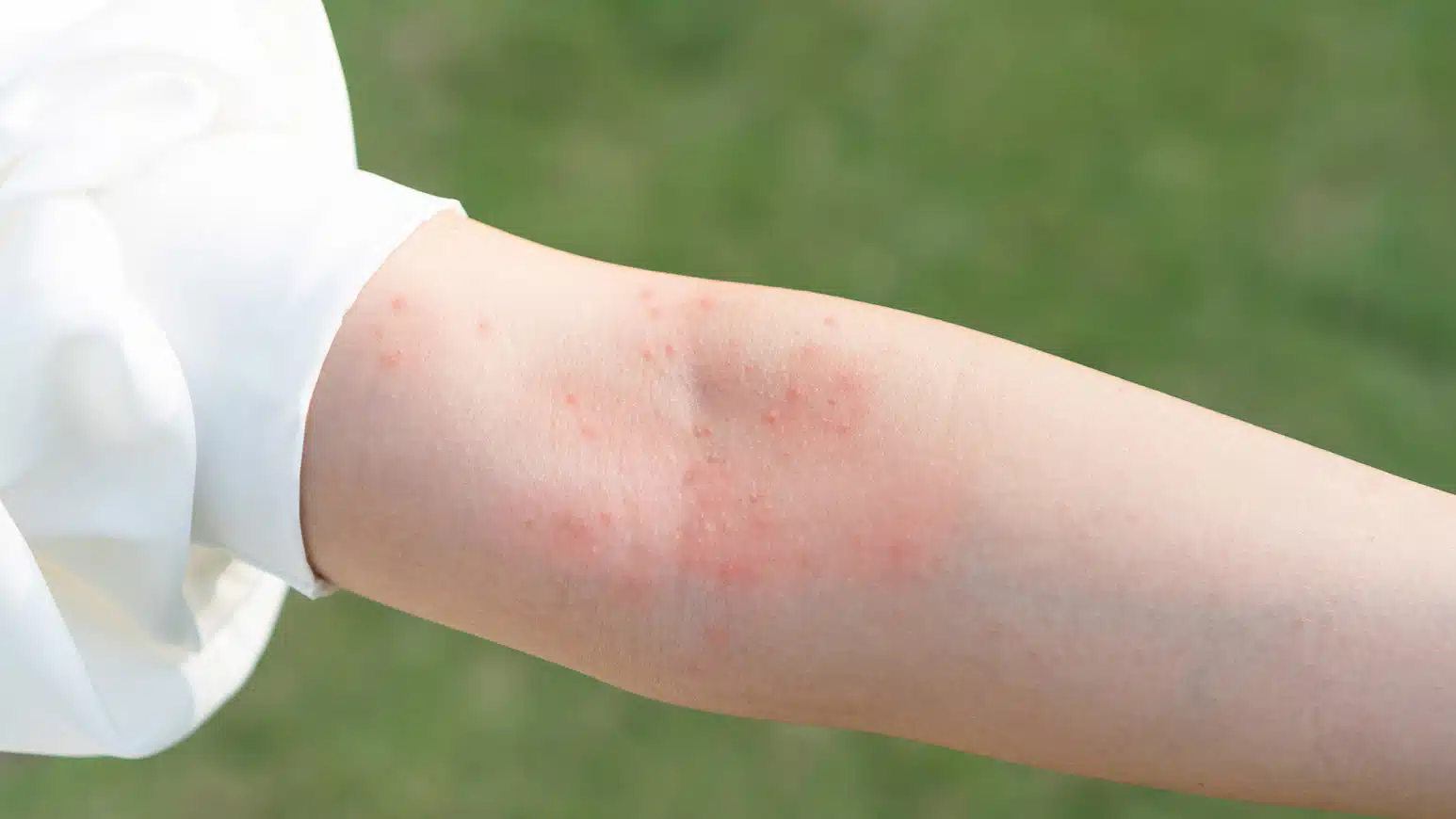What is a Skin Allergy Test?
A skin allergy test is an umbrella term used to refer to a number of testing procedures used in the diagnosis of allergies. Skin allergy tests are popular because they help in the diagnosis of many common allergies.
They also have the advantage of being less invasive than blood tests and provide a good alternative for children or patients who may have an aversion to needles. They also cause little pain or inconvenience for a patient and can be conducted on an outpatient basis. Your allergist can help you determine which skin allergy test is best for your needs.
01
There are several different types of skin tests used by the medical community in the diagnosis of allergies. Each of these tests comes with its own pros and cons. Some tests are better for assessing certain conditions, for example, while other tests are a better fit for certain patients.
02
Some conditions, too, including food allergies, are more diagnostically complex and may require additional testing beyond just a skin test. Determining which test is the best option for you should be done in close consultation with your doctor or allergist.
Types Of Skin Allergy Tests

Intradermal Test
An intradermal skin test involves the injection of a small amount of allergen into the skin. The allergist then observes the injection site for a reaction to the substance. Most commonly, the intradermal test is used to confirm if a patient is allergic to penicillin or insect venom. It can also be a useful tool in diagnosis when a skin prick test comes up negative but the allergist still suspects that the patient is allergic to the tested allergen.
It is one of the quickest allergy skin tests since it typically takes no more than 20 minutes to observe a reaction. It does, however, involve injections into the skin, which may not be the best choice for some patients, including young children.

Patch Test
A skin patch test is most commonly used in the diagnosis of contact allergy dermatitis to determine what substance the skin is reacting to.
The process is straightforward— the allergist adheres rectangular strips containing common allergens to the patient’s back. The patches remain in place for two days, at which point the patient returns for assessment. The allergist removes the patches to see if the skin has had a reaction to any allergen. This process is repeated a few days later to see if the patient has any delayed reactions to allergens.
The downside of this test is that it takes longer and a patient must avoid showering or exercising during the entire testing process. The advantage of a patch test is that it can confirm allergy triggers and help develop a concise treatment plan for dermatitis.

Scratch Test
The skin prick test, also known as the scratch test, involves scratching the surface of the skin and then exposing it to an allergen. An allergist typically conducts this test on the arms or upper back of the patient. A major pro of this test is that results can happen within 15 to 20 minutes.
It can also be used to test for several allergens at once.
A con, of course, is that it involves a light injury to the skin, which may upset some patients, especially children. Scratch tests are most often used to diagnose a wide range of allergies, including pollen, dust mite, foods, and mold.
Skin tests can help diagnose food allergies; however, given the complexities of food allergies, skin tests are not typically the only diagnostic procedure involved in diagnosing these conditions. Patients with suspected food allergies may require additional testing. Skin allergy tests are popular due to their simplicity and to the fact that they are not invasive procedures.
RISKS OF SKIN ALLERGY TESTING
As with any medical procedure, there are some risks associated with skin allergy testing. The most common side effect associated with skin testing is the occurrence of an allergic response in the skin. This typically involves the development of swollen itchy red bumps and blisters.
Sometimes these reactions are visible immediately after application of the allergen but, in some cases, they may take several hours or days to appear. In very rare cases, a patient may develop a severe allergic reaction. This is why skin allergy testing is always conducted in the safety of an allergist’s office under medical supervision.
Skin testing is not recommended for patients with a history of severe allergic reactions. It’s also not a good choice for patients on some heartburn medications or antidepressants. Finally, patients with some skin disorders, including psoriasis and eczema, may wish to avoid skin testing. Blood allergy tests can provide a viable alternative for these patients.
Allergic response
Typically swollen itchy red bumps and blisters.
Severe allergic reaction
While rare, this is why tests are performed under medical supervision.

How to Prepare for a Skin Allergy Test
- Avoid applying any creams, lotions, or perfumes to the test area on the day of the test.
- Patients with excess hair in the testing area will need to shave the testing area.
- Stop taking certain medications before skin testing, such as:
- OTC antihistamines
- Heartburn medications
- Tricyclic antidepressants
- Asthma medication
Your allergist can develop a plan for how long you should eliminate the use of these medications before your test.
WHAT HAPPENS AFTER THE SKIN ALLERGY TEST?
After your skin test, your allergist will go over the results with you very carefully. This means making a treatment plan and an action plan that can help you stay away from allergens that make your symptoms worse. No matter what kind of allergy you have, the first step in treating it is to stay away from allergens.
If an allergen is found to be causing a severe reaction, you may also need to talk about other treatments, such as injectable epinephrine. Your allergist may also suggest changes to your home, workplace, or daily habits that will make you less likely to be exposed to dangerous allergens.






